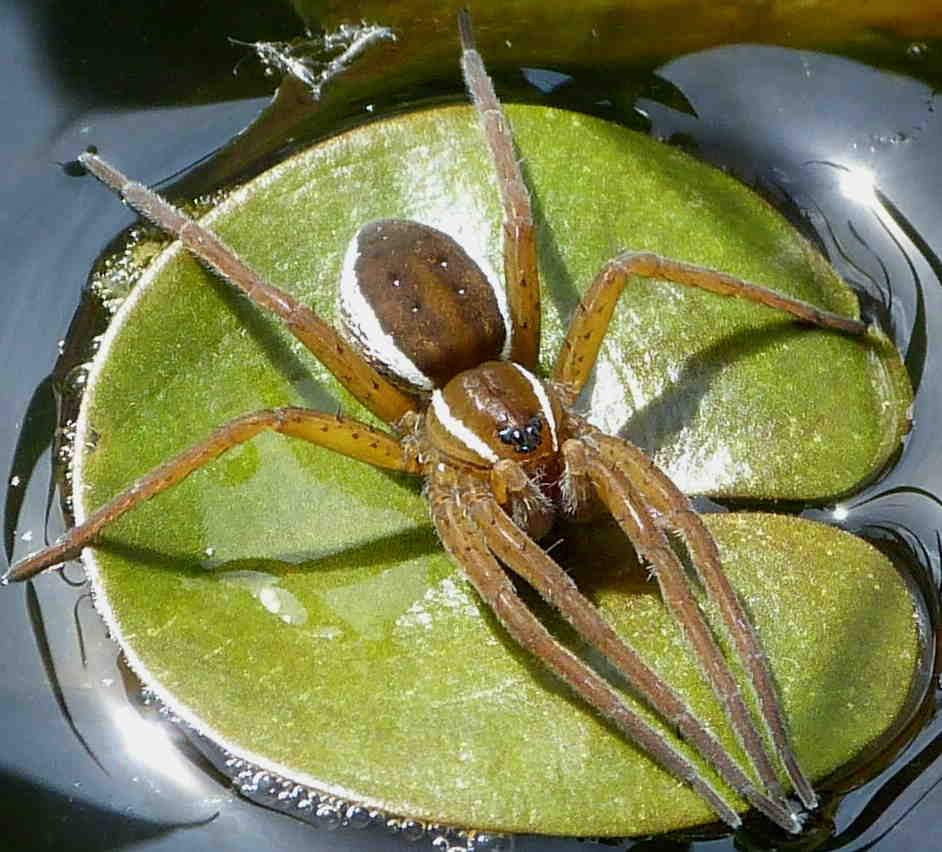Dolomedes plantarius was first described by Swedish arachnologist Carl Alexander Clerck in 1757 as Araneus plantarius but the genus was later reclassified as Dolomedes (Latreille, 1804). This species has also been described under the names Aranea viridata (Müller, 1776), Aranea plantarius (Olivier, 1789), Dolomedes riparius (Hahn, 1835), Dolomedes clerki (Simon, 1937; Renner, 1987). In the UK it is commonly known as the Fen Raft Spider but the name Great Raft Spider is also in frequent use.
Dolomedes plantarius is one of two species from the genus Dolomedes that occur in Europe. The other is the very similar Dolomedes fimbriatus, commonly, and confusingly, known in Britain as the Raft Spider (see also Identification). Although Europe has only two Dolomedes species, world-wide this is a large genus. Taxonomic revisions frequently change the total number of species but, in 2020, it was 136 (World Spider Catalog 2020). Although they are called raft spiders in Europe, the Dolomedes species are often known as fishing spiders, dock spiders or wharf spiders in north America, and as nursery web spiders in other regions.
The genus Dolomedes occurs all around the world and is particularly diverse in south-east Asia. Many, but by no means all, of the species are found in association with water and prey primarily on aquatic invertebrates. The striking lateral banding pattern seen in the European species occurs throughout the genus and appears to be particularly common in the more aquatic species (Baillie et al. 2019).
This patterning is also found in some other members of the same family, the Pisauridae, to which the genus Dolomedes belongs, for example in Megadolomedes and Nilus. In Europe there is only one other member of this family, the terrestrial nursery web spider Pisaura mirabilis.
THE REMAINDER OF THIS PAGE IS STILL UNDER DEVELOPMENT - PLEASE VISIT AGAIN
There are nine Dolomedes species in North America. These include the pond dwelling D. triton, four stream dwelling species, D. scriptus, D. vittatus, D. gertschi and D. holti and the largely bog dwelling D. striatus, D. tenebrosus and D. okefinokensis. The latter two are among the largest in the genus but exhibit extreme sexual dimorphism, with female giganticism and/or male dwarvism; the males of both species are less than half the size of the female. The ninth species is the terrestrial, tree-dwelling species D. albineus.
References
Baillie, A. L., Baillie, S. R. & Smith, H. 2019. The heritability of lateral banding in Dolomedes plantarius. Arachnology 18: 237-244.
World Spider Catalog Version 21.5 https://wsc.nmbe.ch/ Downloaded on 12 November 2020.
